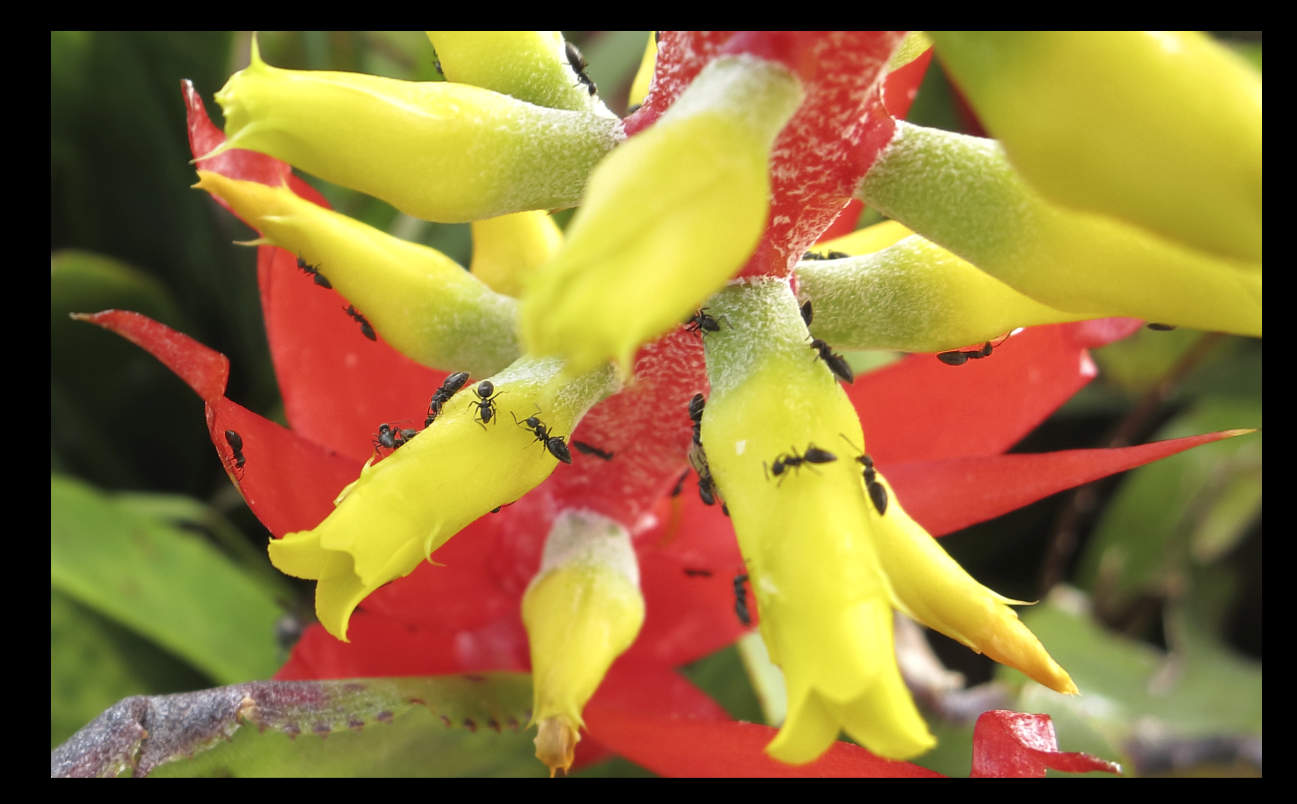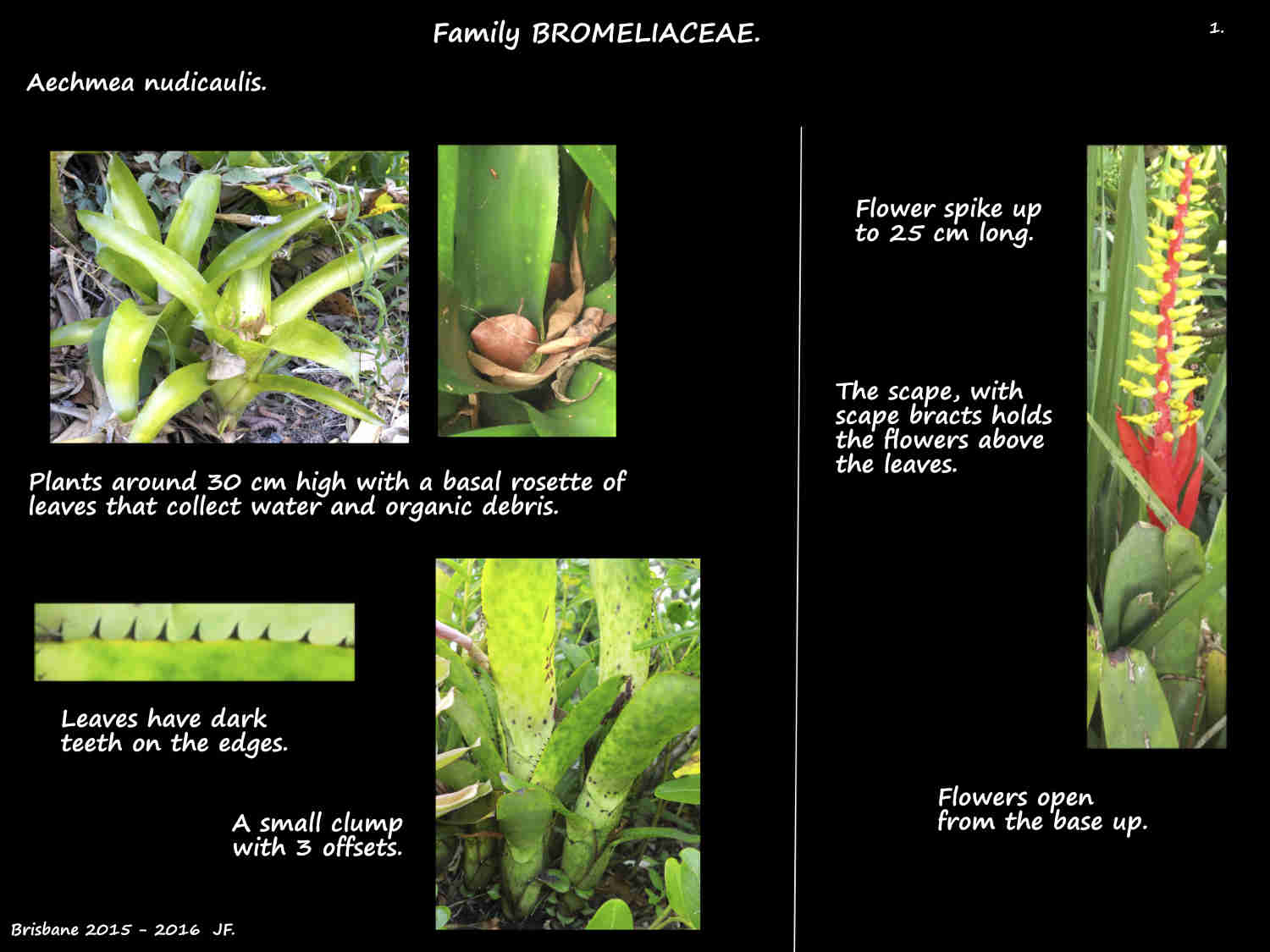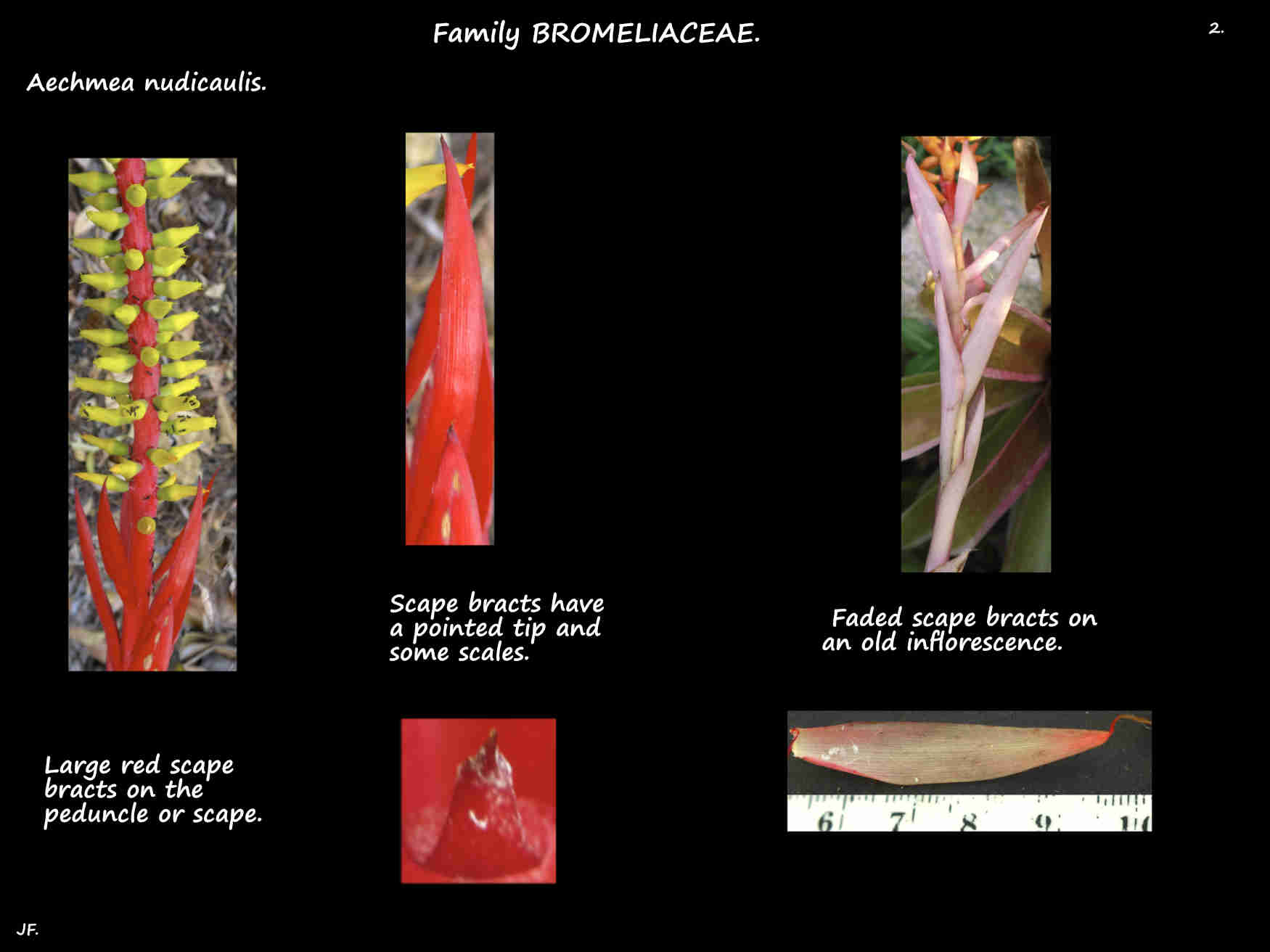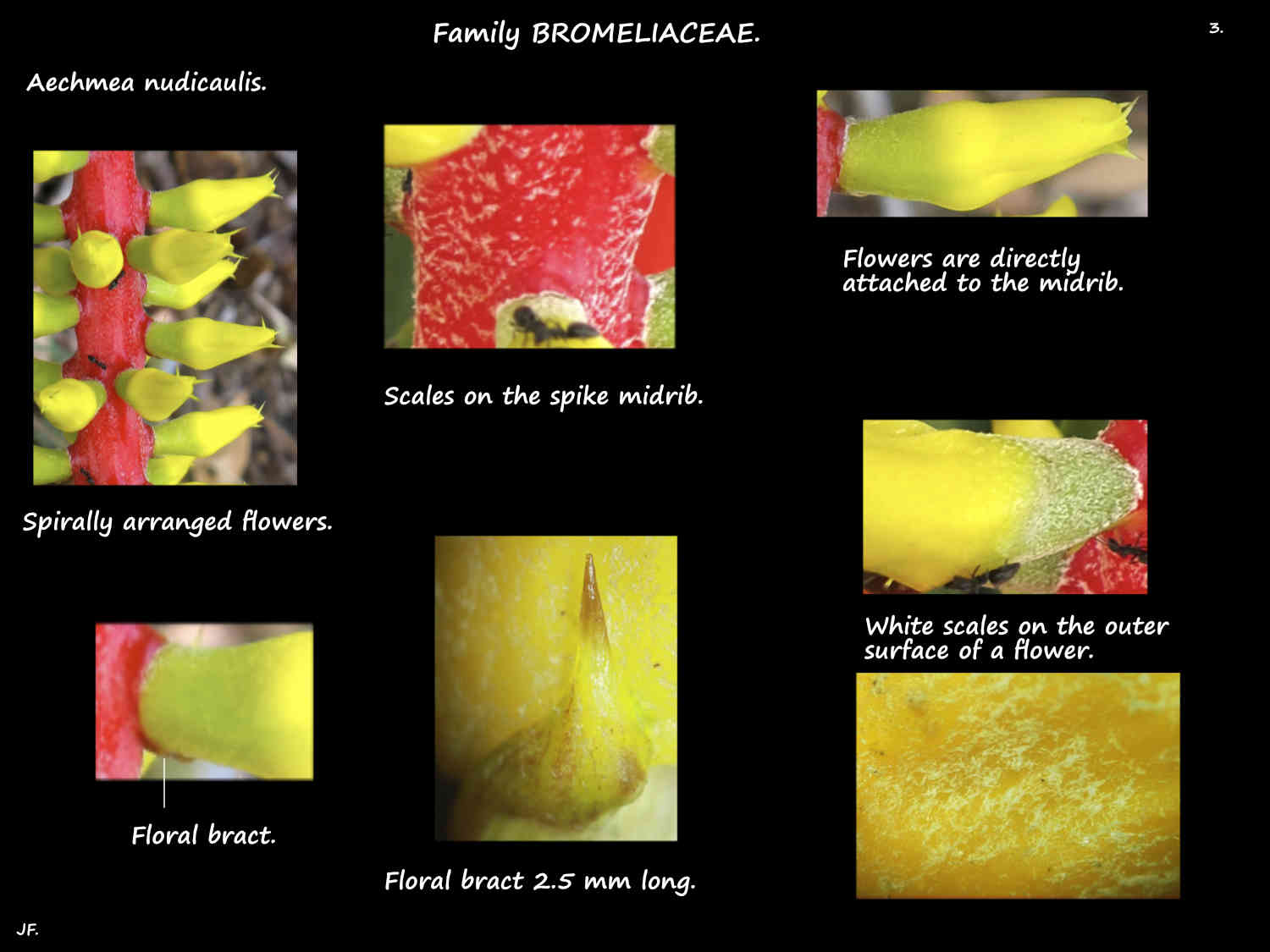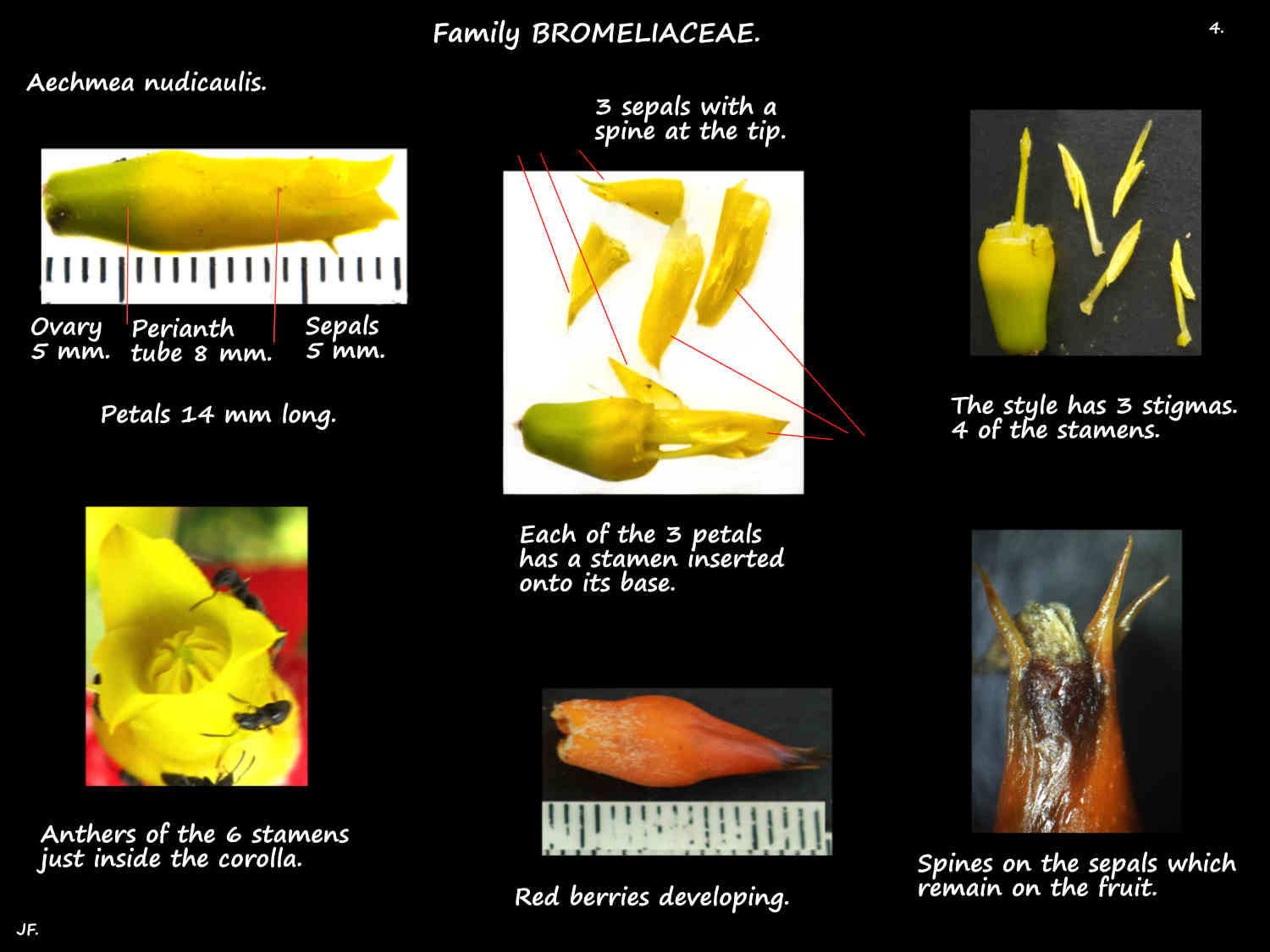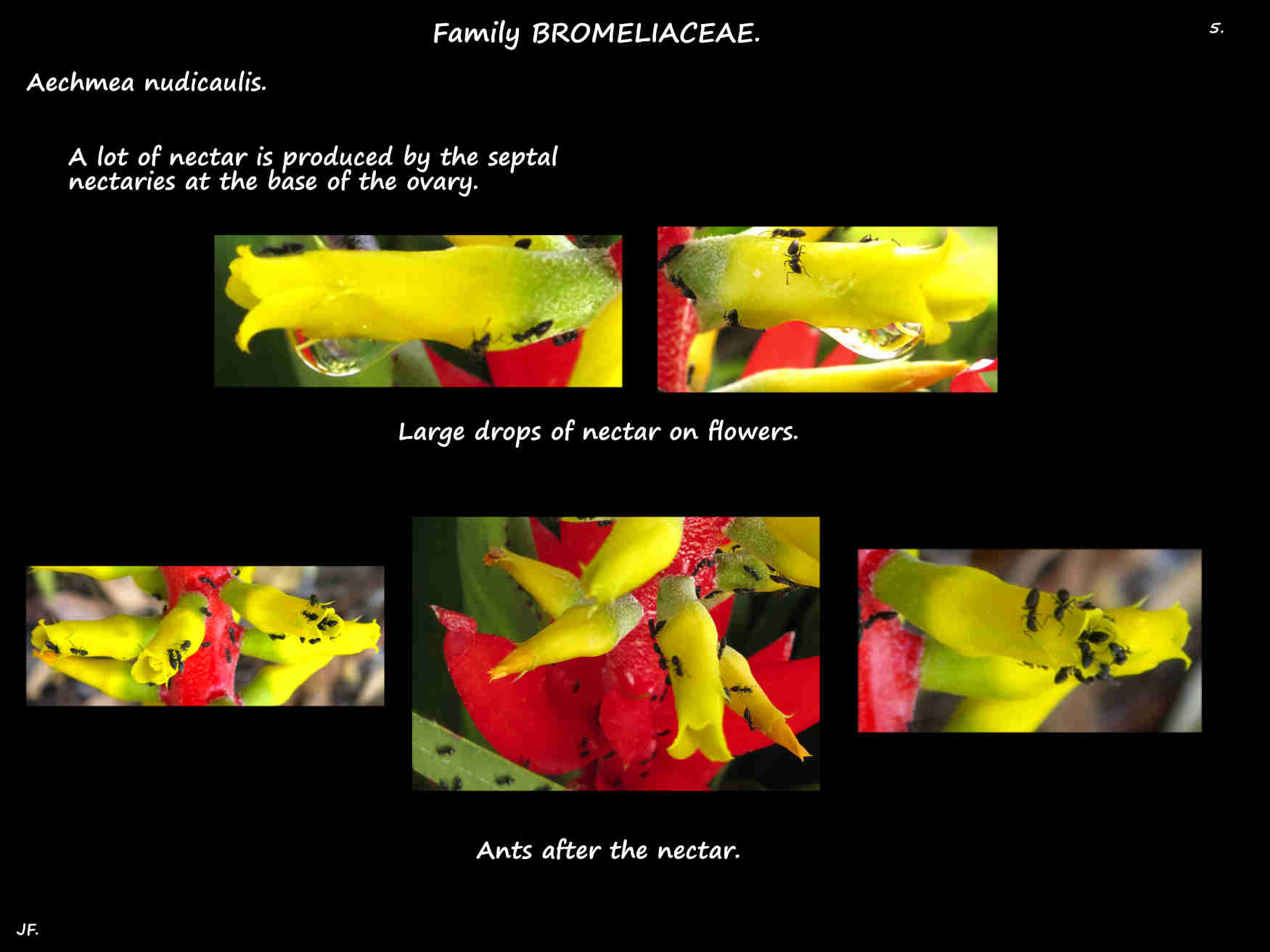Aechmea nudicaulis.
In Aechmea subgenus Pothuava these plants are native to Brazil and Central America.
They are occasionally seen in Brisbane gardens.
In nature they are epiphytic on trees or rocks but they will grow on the ground.
Offsets or pups at the base lead to clump formation.
They are variable plants especially in regard to the size and colour of the leaves with 6 or 7 varieties described.
There are also up to 30 registered cultivars and hundreds of unnamed clones.
The strap-like leaves form a tubular rosette from 20 to 70 cm high.
The large leaf sheaths have purplish-brown scales.
There is a flap-like appendage at the junction of the sheath and blade – a ligule.
The stiff erect to slightly arching blades are up to 60 (90) cm long and 10 cm wide.
Their tightly fitting bases hold water and fallen debris that nourish the plant.
The rounded tip has a short point and the sides have prominent black teeth up to 4 mm long.
The lower surface has dense pale scales making it grey-green and it is sometimes banded.
Colour is variable including reds and brown.
Inflorescences are a narrow cylindrical spike up to 25 cm long on a leafless stalk or scape.
The scape and its long narrow scape bracts are red.
The midrib or rachis of the spike is visible between the spirally arranged flowers.
It is also bright red with white scales that are gradually lost.
The directly attached spreading flowers are up to 22 mm long.
Under each there is usually a small red floral bract.
Flowers have a perianth tube with the 3 sepals and petals inserted on the rim.
The yellow-green sepals, up to 10 mm long have a prominent mucro on the tip and scales on the outer surface.
The yellow petals, up to 12 mm long have a pointed tip.
At the base of each petal, on the inner surface are 2 scales with a fringed upper edge.
There are 6 stamens of equal length that insert onto the rim of the perianth tube or a petal base.
The erect anthers lie just inside the corolla.
The ovary has a single white style with the 3 stigmas lying in the ring of anthers.
The fruit are berries but new plants are mostly grown from offsets.
Varieties include A nudicaulis var. aequalis with yellow scape bracts, var. aureorosea with red sepals, var. cuspida
with yellow scape bracts, sepals and petals and var. nudicaulis with red floral bracts and tiny yellow petals.
J.F.
